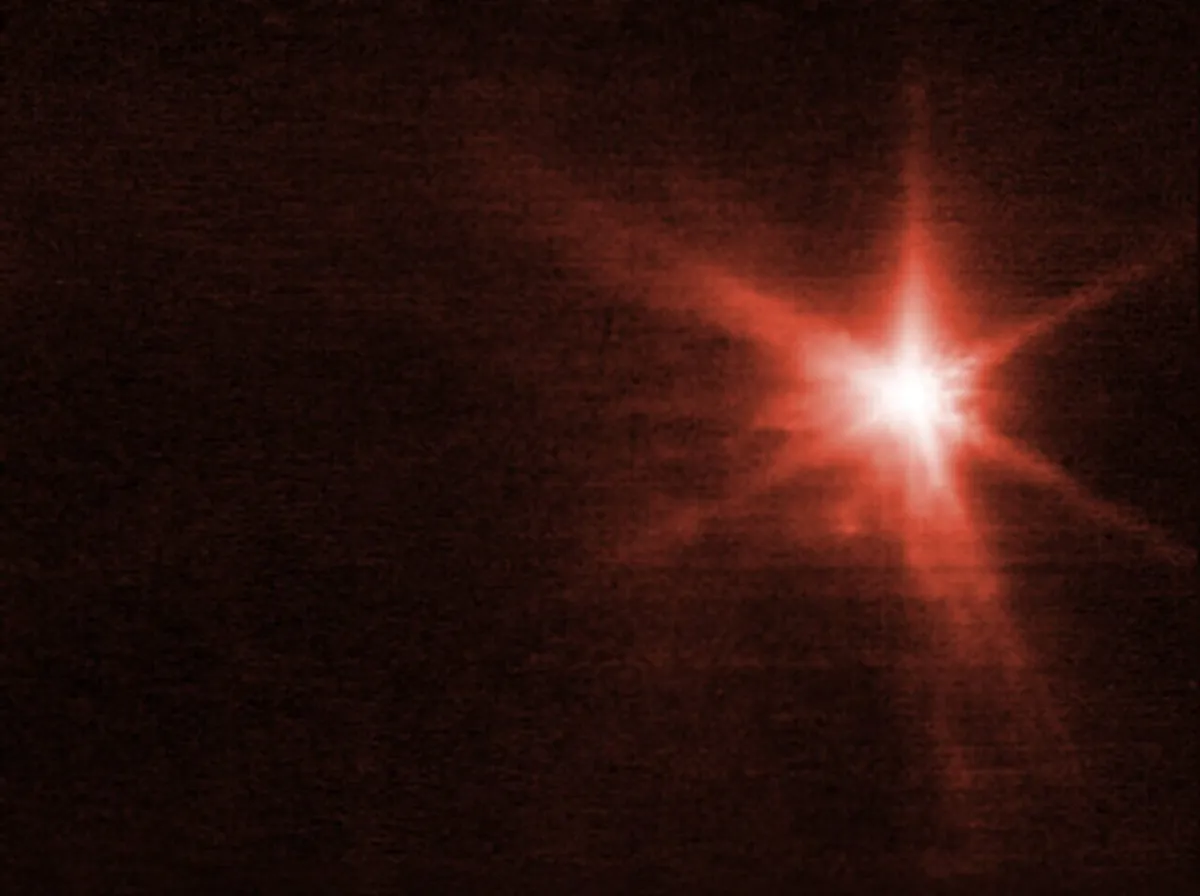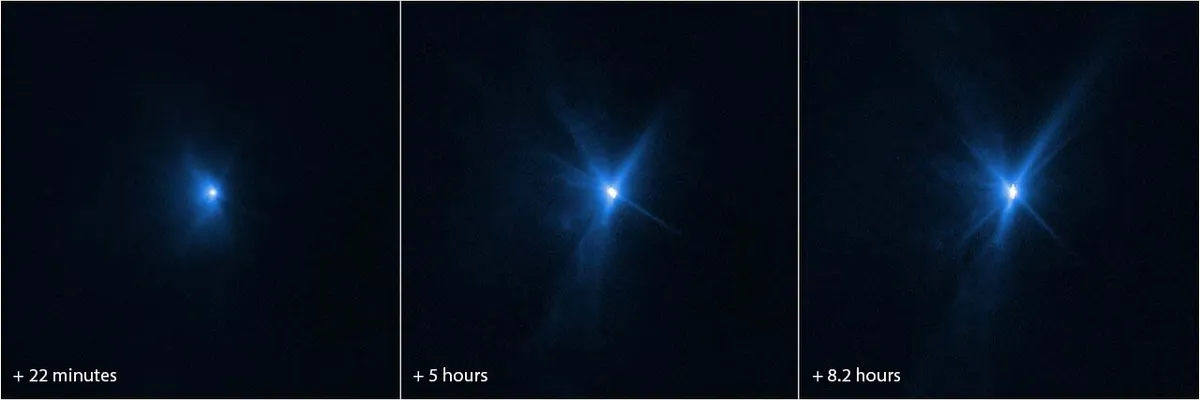Both the James Webb Space Telescope and the Hubble Space Telescope captured incredible images showing the moment NASA's DART mission crashed into its asteroid target.
The images have just been released by NASA and ESA, and show a fascinating perspective of the aftermath of the first successful asteroid deflection test in human history.

ON 26 September 2022 at 23:14 UTC, NASA’s Double Asteroid Redirection Test (DART) intentionally impacted into Dimorphos, a small asteroid moonlet orbiting much larger asteroid Didymos.
The mission is part of a strategy to see whether a potentially dangerous asteroid or comet heading for Earth could be deflected in such a way, in future.
The final stages of the DART mission were live streamed online, so everyone around the world could follow the spacecraft's approach to and impact with Dimorphus.
Both the James Webb Space Telescope and Hubble Space Telescope observed the before and after effects of the impact, giving the intentional crash a new perspective and providing astronomers with vital scientific data.
Webb's DART mission observations
The James Webb Space Telescope observed the site of DART's impact before the collision occurred, then continued to observe the after effects over the subsequent few hours.
In images and a video captured by Webb's Near-Infrared Camera (NIRCam), there can clearly be seen a bright core, with wisps and plumes of ejected material speeding away from the point of contact.
The 8 separate points are actually 8 diffraction spikes caused by the structure of the Webb Telescope's mirror.
The Webb team had spent weeks in the run-up to DART's impact studying how to track an asteroid moving through the sky at a rate 3 times faster than the space telescope's original speed limit.
Webb's Mid-Inrared Instrument (MIRI) and Near-Infrared Spectrograph (NIRSpec) will continue to track the asteroid over the coming months.
Hubble's DART mission observations
The Hubble Space Telescope also observed and imaged Dimorphus before and after DART's collision with the asteroid moonlet, and observed again just 15 minutes after the impact had occurred.
While Webb's observations were carried out in infrared, Hubble's observations were made in optical light.
In the Hubble image and video, we can see rays emanating from a bright centre point. This is material being ejected into space as a result of the impact.
The fan-like ejecta to the left of the bright point is where DART impacted with Dimorphus.
Mission scientists have noted that some of the rays in the Hubble images appear curved, but say more analysis will have to be carried out to determine what this means.

Another mystery has unfolded in the shape of a brightening of asteroid Didymos by as much as 3 times following the impact, a brightness that remained steady even 8 hours after.
Hubble will continue to monitor the asteroid moonlet over the next 3 weeks, in order to get a broader perspective on the movement of the ejected material following the impact.
Observations of the asteroid system will also be carried out by ground-based observatories, as astronomers begin to analyse the effect of DART's impact on Dimorphus and Didymos.
And in October 2024, the European Space Agency's Hera mission will launch, to perform further post-impact studies of the asteroid and moonlet.
